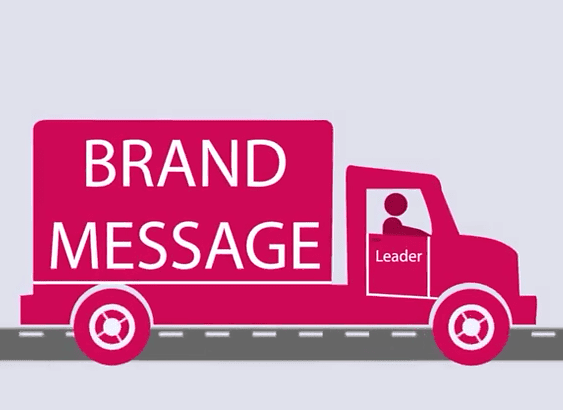How often do we see a case of Business Platform Innovation, the most powerful way of driving competitive growth, unfold before our eyes! Nearly three years ago I wrote an article “10 Ways to Innovate in Business”. It highlighted the fact that R&D-based product innovation is only one the toughest of at least ten ways of innovating to compete and win. I have just spotted a business that has emerged overnight on the back of Business Platform Innovation. It’s already kicking big ticket goals. Here is why.
Teespring, a clever play on words which implies a ‘movement’, is a three-year old start-up that rose on the back of business model innovation. It has already generated over $50 million in funding based on the holistic approach to winning the attention and engagement of the global audiences via business platform innovation.
Too many Australian companies and decision-makers are still stuck in an untenable concept of innovation. The popular definition, that is actually not going anywhere fast is “innovation is something new that adds value”. But, even in this narrow concept there appears to be a blocked pipeline.
Those with research capabilities are often so protective of their ideas that is puts any potential of real commercial gains in limbo: universities and public research facilities are unable to effectively engage with Small Business, the only sector potentially capable of running with commercialising ideas fast.
Spot the Difference!
What is the difference between ‘platform innovation’ and ‘product innovation’?
First, there are two significant similarities. One, in both cases it is essential to find a market need and want that is narrow enough to fit between existing options, and broad enough to provide sustainable volume. And two, marketing excellence and building a Brand is critical to long term success.
Here the similarities end.
With ‘product innovation’, the new product will be sooner rather than later imitated and undermined by stronger marketing. Hence, if you are committed to ‘product innovation’, you need to drive marketing innovation and excellence to always be ahead of the trend (disruptors), more visible and, in general, more persuasive. You need to be Value Marketer, consistently offering a greater perceived Value than the alternatives.
How strong and consistent is your Marketing strategy and action?
What is ‘platform innovation’?
Platform innovation is like a spring board. Once you have found and established your platform, you can use it to propel new business concept to market easier, cheaper and faster, entering new markets and increasing the frequency of sales transactions.
Take Amazon for example. From the innovative distribution of books, now, the question is not what they can sell, but what they don’t yet sell. Recently Amazon added the super successful online shoe retailer, Zappo’s to their stable. Books, shoes… why not anything that can be packaged and delivered to the endless “matrix” of customers who know and trust the “platform’s” capabilities?
Writing this I am acutely aware that there are organisations and people ‘in charge’ of innovation in this country that still struggle with the definition of innovation. Let’s get the real definition of innovation sorted right here.
Michael Porter once wrote, “A company can outperform rivals only if it can establish a difference that it can preserve.”
The definition of innovation I propose is based on the same line of thinking.
Innovation is the strategic (purposeful) activity focused on defending the clearly and realistically identified key elements of your Competitive Advantage.
Platform Innovation is about taking a set of two to three strongest elements of your Competitive Advantage and making it one, stand-alone, salable market offer – building the Brand as soon as the foundations emerge to prevent early competition. NOTE that, just like with product innovation, to succeed, platform-based business needs to lead with marketing excellence. Without marketing, the best product or concept will not reach the market fast or consistently enough.
What makes them “business platforms”?
Amazon: the mother of all modern day business platforms. It found a niche that could be filled with technology and logistics’ innovation. Add marketing and voila – a platform that can accommodate trains going in many directions.
EBay: Like Amazon, it is capable of distributing almost any product or service. The difference is Product creation and Distribution model on the Platform. Unlike Amazon, who sources and sells the products on its platform (one-to-many), EBay has created platform for multiple users to create their own ‘shops’, fill them with products and do their own ‘marketing’ (many-to-many). The strength of EBay, now supported by the global Brand recognition, is in having a large network of users who depend on and therefor support the platform. In this way it is very much like Facebook, which has inseparably tied ‘lives’ of millions of users to its platform.
Microsoft: Although there are now other alternatives and a lot of alienation towards this sometimes ‘unfriendly’ product, businesses are tied to it through sheer cost and convenience of change.
Dior / Chanel: Both brands can be described as an oldie but a goodie! The platform the Brand Name associated with a specific market segment (world-wide) for personal luxury. This unwavering focus enables them to consistently ‘spring-board’ into adjacencies: in both, the range of product categories and in new market segments (age and geography) within the personal luxury market.
InfusionSoft: It’s one of the fastest growing CRM systems for Small-Medium business. There are dozens of CRM systems out there, so why do I think InfusionSoft is a platform? Apart from a very good product initially offered to SMEs – a fully integrated sales and marketing solution for building a sales pipeline – the company is truly marketing-led. It managed to create an ecosystem of satellite businesses that derive their livelihood from assisting InfusionSoft’s customers with using this great but complex software. These businesses became the Brand’s evangelists, ensuring that customers would stick to the platform.
Jim’s Mowing: The ultimate franchise specialist. The platform here is a system that allows them to “Jim” every mobile residential consumer service.
Teespring: Watch this space. Already showing signs of great commercial success and the leaders are fully conscious of the platform they have created. Even the name says it all – presumably playing on words referring to a winning movement.
Are we there yet?
Some could-be-platforms often reach a dangerous fork in the tracks and may miss building or leveraging their potential platform:
Xero: while building a critical mass of users, they need to watch their market engagement and potential disruptors.
Officeworks: great physical distribution network, like any retailer faces online competition – they need to build Brand engagement beyond the product offer to keep customer loyalty.
AIG [Australian Industry Group]: [and many industry associations] large, established membership base that is crumbling around the edges as the company is caught up in policy-paper-shuffling. ‘Large’ and ‘established’ is the root of the problem. They need to find new ways of relating to SMEs and Australian new technology start-ups; and start creating commercial value for the business and its customers. Yet, they are still looking for a definition of innovation and focus on ‘policy’ [whatever that means to business], which at best is the domain of Governments. Like with Australian banks, only the general inertia of business keeps AIG alive.
Have they Missed the Fork in the Track?
More businesses have missed or are facing the risk of missing the opportunity that there are those who have achieved the platform status: Sensis | Yellow Pages | Trading Post | Newspapers |Foxtel | Australia Post | Apple | … and of course, Kodak.
Do you want to create a Platform for your business? Both are possible, even for an established business. Let’s have a look at your competitive skill-set. What is worth defending? What should you jettison?
 Margaret Manson is a marketing strategy & communication specialist. She assists companies in building brand leadership through integrated marketing communication strategy including online content and Brand development, and thought leadership development through business events and Social Media. She is the Chief Inspirator at InnoFuture.
Margaret Manson is a marketing strategy & communication specialist. She assists companies in building brand leadership through integrated marketing communication strategy including online content and Brand development, and thought leadership development through business events and Social Media. She is the Chief Inspirator at InnoFuture.
Contact: +61 407 66 11 30 or Margaret.Manson@innofuture.com.au to find out how to give your business a competitive boost.



